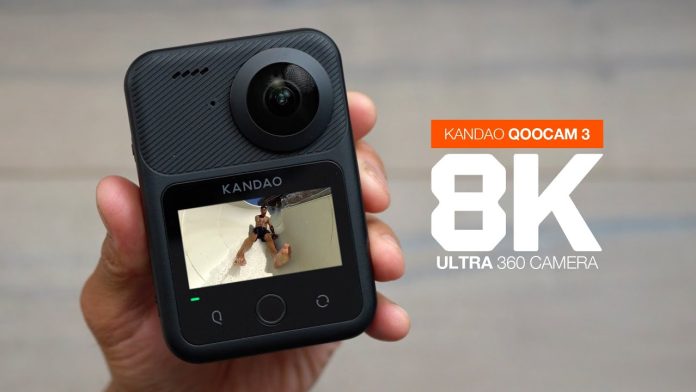The Kandao QooCam 3 Ultra is a great 360-degree camera, but it’s let down by the phone and desktop apps, which aren’t as good as the competition. It’s also more expensive, larger, and heavier than the Insta360 X4. However, image quality is great, and overall usability is good, though working with photos can be a convoluted workflow, especially when processing DNG files and taking advantage of the DNG8 feature.
Kandao QooCam 3 Ultra
One-minute review:
Kandao has been producing 360-degree cameras for quite some time, and the Kandao QooCam 3 Ultra is by far the Chinese company’s best 360-degree camera to date. It’s an alternative and direct competitor to the highly regarded Insta360 X4, and both are among the most intriguing of the best action cameras available today.
BUY IT NOW FROM OFFICIAL WEBSITE or Amazon
The GoPro Max 2’s release has been delayed, but when it does arrive, we expect this 360-degree camera to deliver up to 8K quality, expanding the options accessible to aficionados of 360-degree filming. However, considering the delay and the availability of the QooCam 3 Ultra and Insta360 X4, it appears that GoPro may miss the 8K boat.
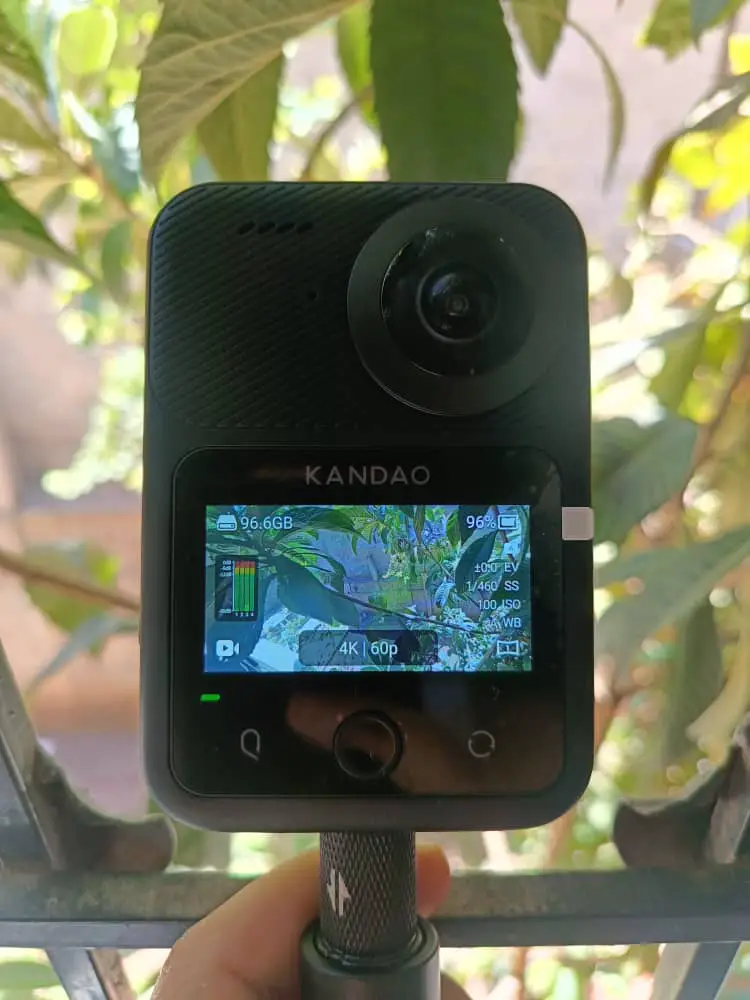
The QooCam 3 Ultra can record video in a variety of modes and resolutions, including up to 8K 30fps for 360-degree video and 4K 60fps in Single Lens Mode. Video can be recorded in a conventional 8-bit Rec. 709 profile or 10-bit Rec. 2020 (HLG), with LUT support included in QooCam Studio. There is also a Dynamic Range Boost for HDR shooting, which reduces quality when taking photos but claims to boost dynamic range by two stops.
This is a multifunctional action camera with IP68 dust and waterproofing to a depth of 33 feet / 10 meters, 128GB of internal storage, a microSD card slot, and wireless control via the QooCam 3 app. However, it is not a cheap 360-degree camera, costing more than its nearest competition, the Insta360 X4.
Release date and price:
- Launched in August 29, 2024.
- Costs $599, £579, or AU$1,033.
- Accessories are available separately.
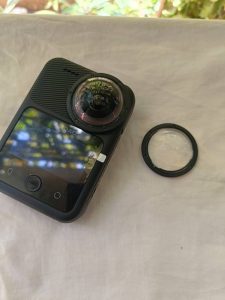
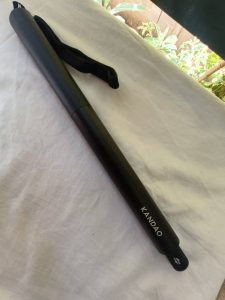
The Kandao QooCam 3 Ultra was released in August 2024 and is currently available for $599 / £579 / AU$1,033. The camera is priced at USD $699 for Australian visitors to the Kandao website. This is far more expensive than the QooCam 3 and the Insta360 X4, which cost $499.99 / £499.99 / AU$879.99 at launch.
At the time of writing, only the QooCam 3 Ultra basic kit with camera, battery, PD cable, lens cloth, and protective case was available, therefore extras had to be purchased individually.
BUY IT NOW FROM OFFICIAL WEBSITE
The accessories include a battery charging case, additional batteries, selfie sticks, a car suction mount, and detachable lens shields. A selfie stick in the kit would be preferable, as they are required for 360-degree cameras.
Specs:
| Sensor | Dual 96MP 1/1.7-inch sensors |
| Video | 360-degree 8K up to 30fps, 5.7K up to 60fps, 4K up to 120fps, single lens up to 4K 60fps |
| LCD | 2.19-inch touchscreen |
| Video modes | Video, Dynamic Range Boost, Loop Recording, Interval |
| Connectivity | Wi-Fi 6, Bluetooth 5.2, USB-C |
| Memory card | MicroSD UHS-I V30 |
| Size | 2.81 x 4.06 x 1.04 inches / 71.5 x 103.2 x 26.6mm |
| Weight | 11.85oz / 336g (including battery) |
| Battery | 2280mAh |
Design and Handling:
- Larger and heavier than the competitors
- Waterproof up to 33 feet/10 meters.
- 1/4-inch screw thread.
The QooCam 3 Ultra looks quite similar to the QooCam 3, however it is taller and heavier, weighing 11.85oz / 336g including the battery. This is obviously still lightweight, but it weighs 4.44oz / 126g more than the QooCam 3. In most cases, it has little effect on handling or usefulness; however, if you attach the camera to bike handlebar mounts, for example, you must ensure that your mount can sustain the camera.
The build quality is superb, and the camera feels solid, with dust and water resistant to 33ft/10m – yet, like with many 360-degree cameras, the two fisheye lenses on each side mean you wouldn’t want to drop it. Pop-on lens shields are available separately and provide enough protection against stray stones and minor bangs.
The camera body is minimally built, with a power and mode button on the left, a shutter button beneath the 2.19-inch rectangular touchscreen, a programmable Q button, a button to change camera views, and a 1/4-inch screw thread on the bottom. Most settings and functionalities are accessed by swiping from the top, bottom, and sides of the screen, like with most action cameras and 360-degree cameras, making the QooCam Ultra 3 easy to use.
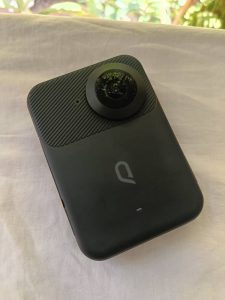
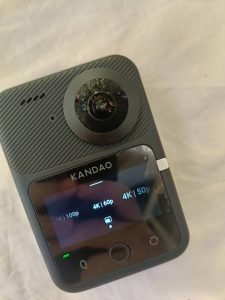
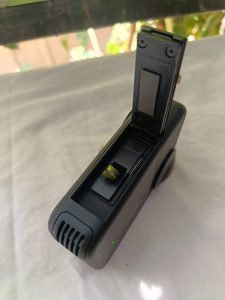
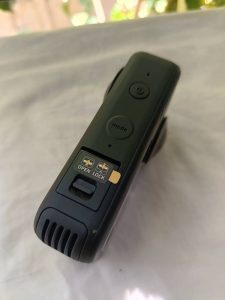
The camera works fine without the phone app, but it can also be connected to the QooCam 3 app by WiFi 6 for wireless operation. In terms of connectors, one side of the camera has a USB-C port under a waterproof door that can be used to charge the battery and upload photographs and movies, while the other side has a cover that keeps the battery and microSD card slot, which can accept cards up to 1TB, safe from water incursion. The latter is useful, but with 128GB of built-in storage, a memory card isn’t always required.
In terms of battery life, disregarding everything Kandao promises, I spent almost an hour traveling around a city shooting 8K footage, timelapse/hyperlapse videos, and images, and the battery barely drained – it only ran out days later after additional shooting.
Of course, this was not in constant usage, but in practical terms, I was not dissatisfied. A second or even third battery is still necessary to ensure you can continue shooting while out for the day, and the battery charging case, which is sold separately, simplifies charging and stores batteries while not in use.
Features and Performance:
- Dual 1/1.7-inch quad-bayer sensors.
- 96-megapixel 360-degree photographs
- 10-bit HLG video option.
With its dual 1/1.7-inch Quad-Bayer sensors and f/1.6 aperture lenses with 9.36mm equivalent focal lengths, the QooCam 3 Ultra’s primary functions are essentially integrated into the hardware. To enhance the quality of the images, 8K video is oversampled. 96MP 360-degree images, 10-bit HLG, SuperSteady Stabilization, spatial audio, integrated GPS, and single-lens video capture are further features.
The 6-axis gyro used in Image Stabilization is effective; but, unless you walk with your knees bent, as required by professional video gimbals, the bob of walking will be visible, as demonstrated in the sample video. Although both work the same in this regard, this was intentionally recorded in this manner to see if the QooCam 3 had been improved.
BUY IT NOW FROM OFFICIAL WEBSITE
The camera image on the camera LCD and in the app is also stabilized, unlike the QooCam 3 at launch, bringing you much closer to what you’ll see on-screen, which is an improvement. However, using 360-degree cameras, the majority of the results are obtained by reframing video in software.
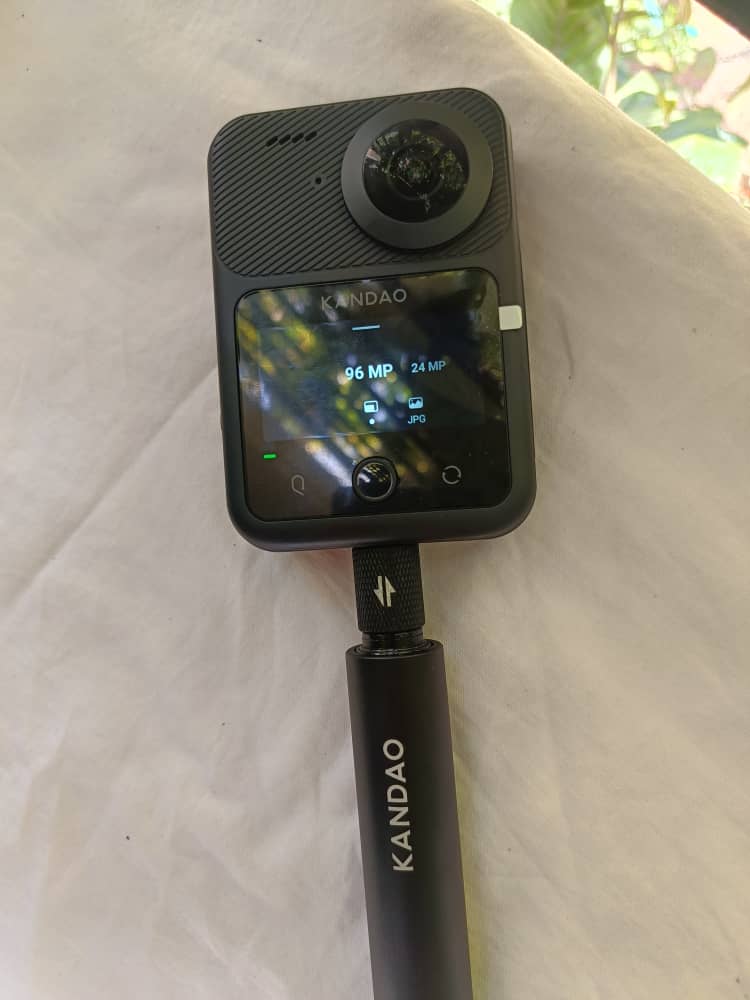
QooCam Studio, Kandao’s desktop photo and video editing program, but lacks the clean and user-friendly interface, as well as some of Insta360 Studio’s more fascinating reframing possibilities. It’s still quite simple to use, and the QooCam 3 phone app has more features than the PC version, including the ability to use templates, though both might be much improved.
The sound quality from the four directional mics for spatial audio capture is quite high, but don’t be deceived by the choppy sound in the QooCam desktop application. Once videos are exported, the sound is significantly better and is just how it should be. You can also connect external microphones via Bluetooth or USB-C; if sound is crucial, one of these will be required to achieve the highest sound quality and eliminate ambient noise.
Another handy feature is single lens recording, which allows you to shoot video using only one of the lenses rather than both – you can choose whether to face the camera towards or away from you. This is great when you only need a single view, and video can be taken in 4K up to 60fps or 3.4K at 100/120fps for slow motion recording.
You still need to pass the tape through one of the programs that allows you to modify the field of view – the view collected is square but is cropped to 16:9 using the Reframe Adjustment option. It’s worth noting that Single Lens videos cannot be reframed because the viewpoint is fixed.
Image and Video Quality:
- Up to 8K 30fps video.
- Up to 96 MP pictures
- Slow Motion Capture
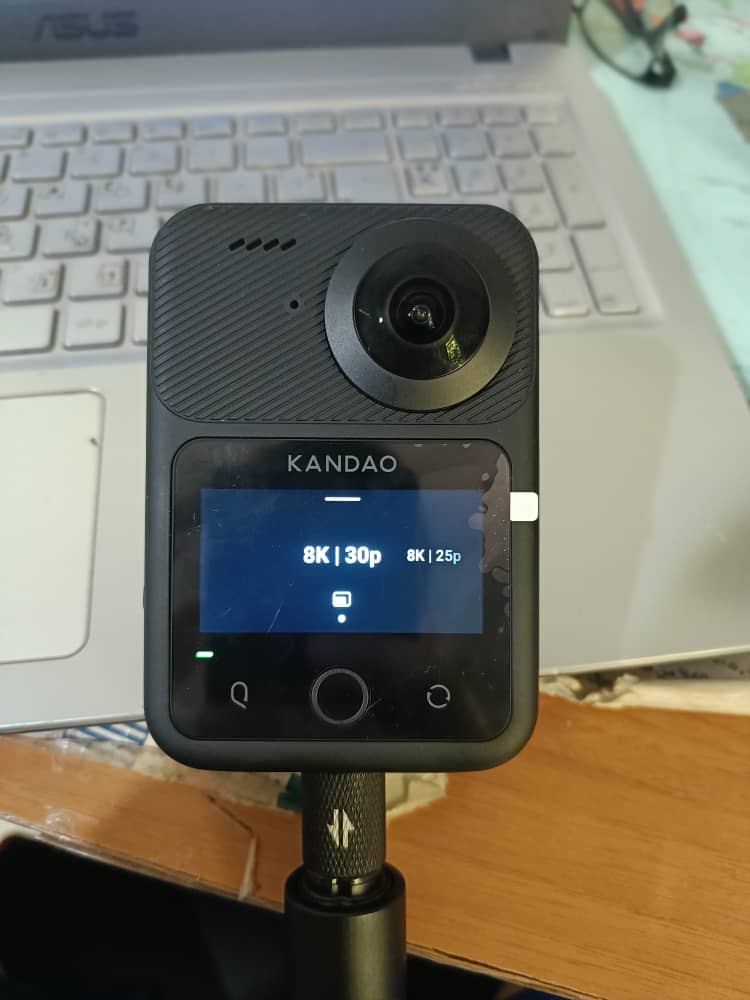
360-degree cameras may seem incomprehensible at first, but they are far less sophisticated than they appear and allow up a plethora of creative options. You can pan, zoom, and change camera orientation to conveniently film yourself as well as the surrounding surroundings. Although an 8K resolution may appear overkill, it spans 360 degrees and significantly increases image quality in 360-degree recordings.
360-degree videos can be taken in 8K up to 30fps, 5.7K up to 60fps, and 4K up to 120fps, so while 4K allows for 360-degree slow motion, the image quality is significantly worse than 8K. 8K file sizes are massive, and even 5.7K are quite large, so you must evaluate how much footage you intend to take and whether the 128GB of on-board storage has to be supplemented with a microSD card.
Reframed 360-degree video
Timelapse/hyperlapse
8K 360-degree and timelapse recordings look fantastic, albeit there is a slight wobble when lens pictures are stitched, which hopefully can be rectified. Overall visual quality is excellent even at the Standard bitrate (100Mbps), but it can be improved by selecting High (150Mbps). Color profiles available include 8-bit Rec. 709 for in-camera processing footage and 10-bit Rec. 2020 (HLG).
Buy KanDao QooCam 3 Ultra from Amazon
The latter offers a far wider dynamic range thanks to the option to apply LUTs in QooCam Studio, which comes preloaded with 11 LUTs and allows you to create your own. Unfortunately, there is no way to reduce LUT strength, and there are no options for adjusting video settings such as exposure, white balance, shadows, or highlights.
When using the phone app, you receive a histogram to help with exposure, but when shooting with the camera alone, you only get an exposure warning, with blue indicating shadow clipping and red indicating highlight clipping. This is absolutely acceptable and offers a quick and simple approach to assess exposure.
The dynamic range isn’t fantastic, so keep an eye on your highlights, although Dynamic Range Boost for HDR shooting increases dynamic range by two stops at the sacrifice of photo resolution, which is restricted to 24 MP. There is a visible difference between ordinary and Dynamic Range Boost photos, and the latter require no more processing than the former. Video looks OK because you’re compelled to capture in 10-bit Rec. 2020 (HLG), which has a flat profile and a wider dynamic range.
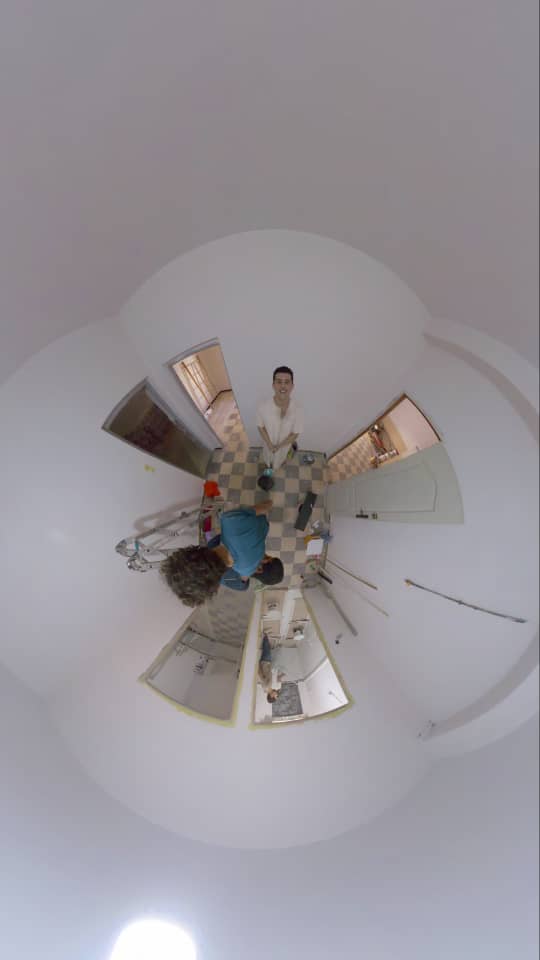



The DNG8 shooting feature produces the highest photo quality by capturing eight DNG files and then merging them in the RawPlus software to boost clarity, reduce noise, and extend dynamic range. The disadvantage is that the method is cumbersome, requiring you to merge the eight DNGs into a single DNG in RawPlus, export, edit in Lightroom, output a JPEG, and then reframe the JPEG in QooCamStudio before exporting a final JPEG.
Standard photo quality is fairly acceptable, with stronger lighting producing the best photos, as do most action cameras and drones with tiny sensors. However, when working with DNGs, you must edit in Lightroom, export a JPEG, and then reframe it in QooCamStudio before exporting again. This method has not been changed since QooCam 3, and it could and should be considerably more efficient.
ISO handling is decent for a camera with such small sensors, and when combined with the f/1.6 apertures, it’s ideal for low-light shooting. I tested the camera at night in a dark environment using ISO 6400, the maximum level possible, and the results are usable, but it’s not a setting you’d want to rely on too frequently. ISO 1600 is far more useful, but shooting at the lowest possible ISO is always preferred.
Kandao QooCam 3 Ultra: testing scorecard
| Attributes | Notes | Rating |
|---|---|---|
| Price | More expensive than the competition | 3/5 |
| Design | Excellent build quality but larger than the QooCam 3 | 4/5 |
| Performance | Multiple shooting options for photos and videos | 4/5 |
| Image and video quality | 8K video and 96MP photo quality is impressive | 4.5/5 |
Should I buy the Kandao QooCam 3 Ultra?
Buy it if…
You want to shoot 360-degree videos.
The QooCam 3 Ultra allows you to record 360-degree video, and its 8K maximum resolution delivers high-quality images.
You want to be able to quickly video oneself.
360-degree cameras make it extremely simple to film yourself with a single camera and no need for a camera operator, simplifying the procedure.
Don’t buy it if…
You are on a budget.
The Insta360 X4 is less priced and has up to 8K video capturing capabilities, as well as amazing phone and desktop interface functions.
What are my Thoughts I tested the Kandao QooCam 3 Ultra?
- Tested all features and functions
- using both phone and desktop apps for editing.
- Image quality was assessed.
The QooCam 3 Ultra was tested for many weeks, taking images and movies in a variety of settings and locales to assess all of the features and capabilities, as well as handling. With 360-degree cameras, recording is just half of the game, so the second phase of testing involved running everything via the QooCam 3 smartphone app and the QooCam studio desktop app to put editing to the test.
Approaching 360-degree image capture is extremely similar to, but vastly different from, capturing ordinary photos and videos. So, with this in mind, I drew on 30 years of photographic expertise and 16 years as a photography journalist. Having previously used these types of cameras, I knew what to anticipate and what to look for, but as with any new device, there is always something new to discover.


